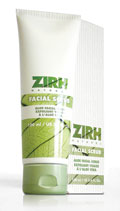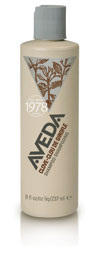As children, we learn the difference between right and wrong. We learn that lying is bad, and telling the truth is good. Or that bullying is wrong, and standing up for someone is right. These morals are even reflected in the TV shows and movies we watch. The “bad guys” are normally in trouble for stealing money or plotting to take over the world, while the “good guys” are there to set things right again.
When it comes to naming the good and bad guys in the consumer packaged goods industry, however, it’s not that black and white. Legislators across the world are beginning to implement laws on packaging, aiming to reduce the amount of materials going into landfills. While this ought to benefit the environment, there is fear over how some of these laws might affect package design and consumer experiences with luxury brands.
For instance, earlier this year, China’s General Administration of Quality Supervision (AQSIQ) issued legislation against excessive packaging, regulating the size, volume, material and cost of food, beverage and cosmetic packaging. The law states that free-space between the product and outer packaging layer may not exceed 55 percent; a product may not have more than three layers of packaging (excluding the primary package); and the cost of the packaging should not exceed 12 percent of the product cost.
In France, the government has passed a law limiting packaging to only what is required to guarantee product safety, hygiene and logistics. Basically, just enough packaging to protect the product. And unlike past laws, the French government omitted two very important words in this new legislation: consumer acceptance.
The Grenelle law enables the French government to decide which products are using too much packaging. Had the French ordinance included wording of “consumer acceptance,” it would have allowed a brand called out for using too much packaging to argue that it was necessary to sell the product.
Although many luxury brands use complicated layers, substrates and finishes in their packaging, they do it because it adds to the brand experience-and it’s what consumers have come to expect.
“When you’re buying a luxury product, you’re expecting that not only the formula be good, but you are, to some degree, paying for the packaging,” says Taya Tomasello, director of beauty innovation-Americas, Mintel International.
In some instances, the packaging is so entwined with the product that a change could substantially alter the product experience.
“I would be interested to see the reaction of French consumers if suddenly the traditional champagne bottle was ordered to be replaced by a lighter weight container on the grounds that it did not comply with the [new Grenelle law],” says Julian Carroll, managing director, The European Organization for Packaging and the Environment (EUROPEN). “Similarly, conventional packaging for high priced luxury goods, an important element of the French economy, could also be ruled illegal.”
To put the Grenelle law into place, the French government must issue a decree, which it hasn’t done yet. But what will happen to the French luxury industry if it does?
“The fear is that it could open the door for very zealous officials or bureaucrats to call into question the amount of packaging and the style of packaging used for products,” Carroll says.
And while it’s not clear what the future will bring, luxury brands would be wise to get ahead and preempt such regulations by working to make their packaging more sustainable.
But how can a premium brand be sustainable and still remain stylish? Thanks to the category’s knack for innovative, fresh design, it’s clear that sustainability is becoming just another variable for designers to work with.

Make It Refillable
Take the idea of refillable packaging, which can be a healthy compromise. Because consumers enjoy showing off their beautifully packaged products, brands have an opportunity to create luxury packaging that consumers will want to keep and reuse. It might be a bit pricier upfront, but luxury refills can be much less expensive from there on out.In the everyday luxury category, for instance, Method uses refillable soap pumps to save consumers money, and help the environment.
“They do a really good job of making their hand soap really attractive; something that you can put out on your sink,” Tomasello says. “Then they just sell the standup flexi pouches for a refill. You get more for your money, and you’re not wasting all the additional plastic by buying the same thing over and over again.”

Keep It Light
To reduce packaging waste, it may be appropriate for some brands to eliminate some of their outer bulk. But it’s not for everyone. Many luxury packages use multiple layers to enhance the consumer experience: The package might consist of the primary packaging and several different forms of secondary packaging that all work together to tell the story of the brand.So, if multiple packaging layers are a necessity, brands can turn to other options.
“It is important to understand material selection and manufacturing techniques,” explains Denis Boudard, president and founder of QSLD Group. “Effective manufacturing techniques can help to reduce packaging waste and excess, as well as streamline the production process. By using primary and secondary packaging composed of post-consumer goods, we are able to reduce waste while also using product-appropriate packaging.”
For instance, when QSLD designed the packaging for Zirh Skincare, a natural skincare line for men, it chose primary packaging made from post-consumer recycled materials and recyclable secondary packaging.

Use Recycled/Recyclable Materials
Of course, it only takes one universal symbol to let consumers know their packaging is environmentally friendly: the recycle symbol. From glass to (most) plastic and aluminum, recyclable materials can offer manufacturers a greener way to package luxury products.Aveda is a good example. The company has been a leader on the sustainability front, and is known for pressing the limits of plastic production by using as much recycled content in its products as possible.
“In many cases, our skincare lines are 100 percent post-consumer recycled PET; Our shampoo bottles are up to 96 percent high density polyethylene,” says Dean Maune, executive director of package development for Aveda.
Aveda even started a Caps Recycling Program, asking its salons and stores, along with schools, to collect the closures of water, soda, detergent and shampoo bottles made of polypropylene plastic (which isn’t widely recycled). Once collected, the caps are sent to a plastics recycler to be ground and molded into new caps.
The first product to make use of these 100 percent recycled caps was Aveda’s Vintage Clove Shampoo. But it wasn’t as easy as it sounds. The caps collected were all different colors, resulting in a range of tints for the new cap. To work with the variation, the design team created a distinct color scheme and gave the bottle a vintage appearance.
“We worked very closely with our package design group to try and blend in the package design in the colors to achieve that luxury look,” Maune says.

Make It Biodegradable
Although creating biodegradable packaging may be more difficult than recyclable packaging, and less common, it is a path some luxury brands are taking as a way to be more sustainable.Pangea Organics offers compostable, biodegradable and plantable packaging, thanks to its molded fiber box made from 100 percent post-consumer newsprint and used across the luxury brand’s bar soaps, skincare line and massage and body oils.
For instance, Pangea bar soaps are packaged in seeded boxes and the soaps contain seeds of flowering Amaranth. When consumers are finished with the packaging, they need only soak it in water for one minute and plant it one inch deep in soil. Within days, the package will begin decomposing and the medicinal herb will start to sprout.
But it’s not as simple as choosing new material or eliminating a layer from the existing packaging. Manufacturers must also ensure that their efforts work to strengthen the experience consumers have with the brand.
“Naturally, everyone is concerned about the environment and sustainability issues, but when dealing with a luxury brand image there are many factors that need to be considered,” QSLD’s Boudard explains. “Is this consistent with my brand’s message? Is it a natural progression for the brand? Will it resonate with our current consumers and allow us to reach new ones?”
If the day comes where luxury brands are required to reduce the amount of packaging they use, as it has in China and appears to have arrived in France, companies will have to react-and innovatively. And while regulations may alter traditional consumer expectations, it’s clear that many premium brands have taken steps to prove that eco-luxury is possible. BP
Stephanie Hildebrandt is the associate editor of BRANDPACKAGING. Contact her at hildebrandts@bnpmedia.com.
CONSUMER/MARKET RESEARCH
Taya Tomasello at Mintel International (312.932.0400,www.mintel.com)
SUSTAINABLE PACKAGING ASSOCIATION
Julian Carroll at EUROPEN (+32(0)2.736.3600,www.europen.be)
ART DIRECTION AND DESIGN
Denis Boudard at QSLD Group (+33.1.47.15.04.40,www.qsld.com)
